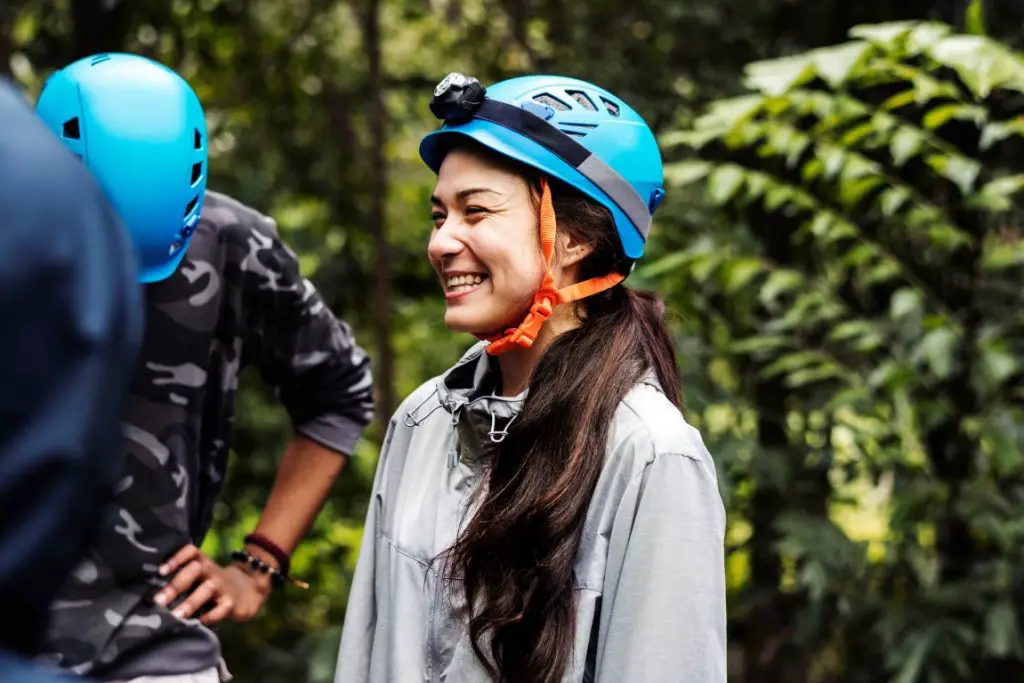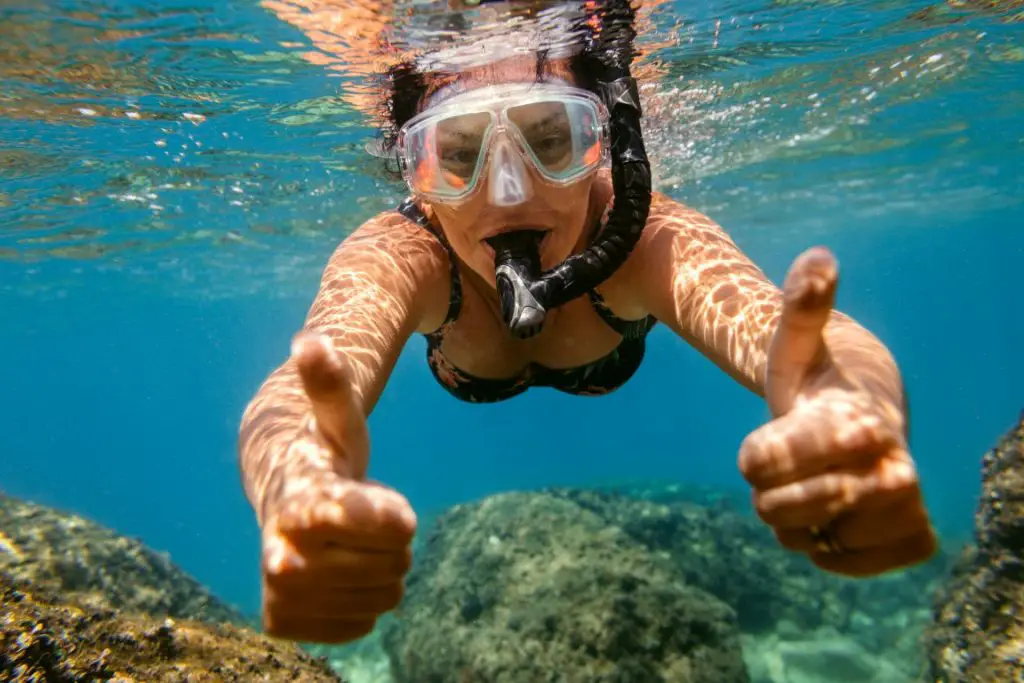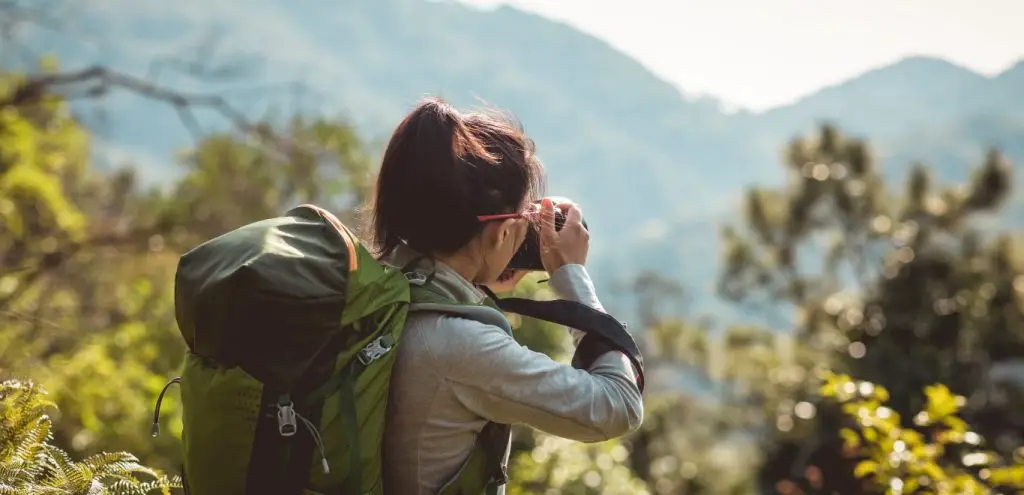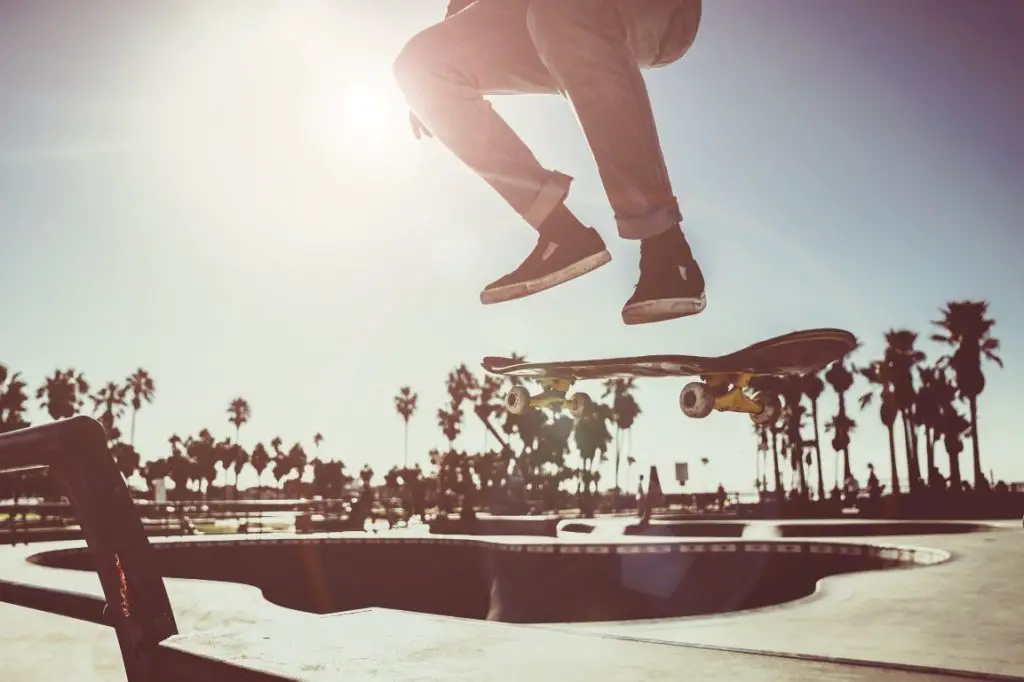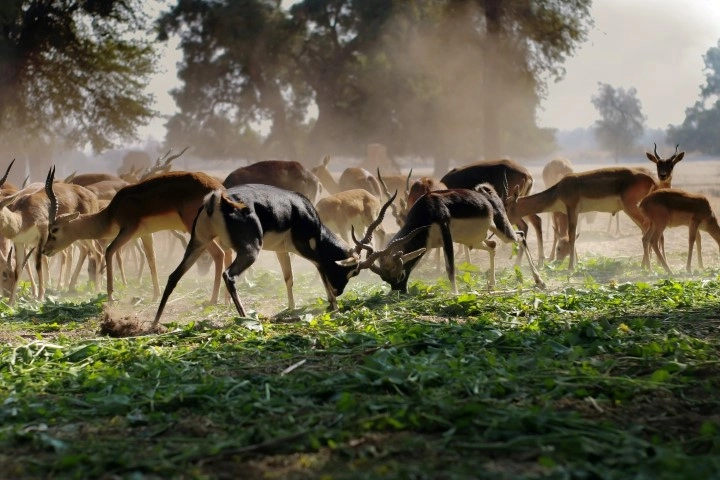
Digiscoping is an excellent method for capturing close-up images of wildlife, birds, and other natural wonders without the need for a bulky DSLR camera. Choosing the best digiscoping adapter for the iPhone, which boasts numerous features, can produce incredible results.
In this article, I’ll share my experience and tips on how to get started with digiscoping using your iPhone. Additionally, I’ll provide my top picks for iPhone adapters and other gear needed for digiscoping with iPhone.
What is Digiscoping?
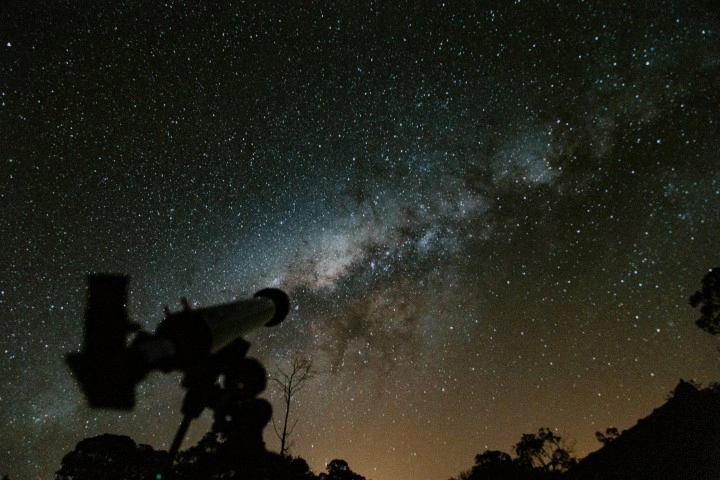
At its core, digiscoping is a method that combines the magnification power of spotting scopes or telescopes with the convenience of digital cameras or smartphones.
Digiscoping types include spotting scopes for terrestrial views, telescopes for distant subjects, and binoculars for quick captures. For adventure photographers like myself, this means being able to capture wildlife or scenic shots that would otherwise be out of reach.
Why Use an iPhone for Digiscoping?
You might wonder, why specifically use an iPhone for digiscoping? Well, based on my experience:
- Their widespread use means that accessory manufacturers often prioritize creating compatible equipment for them.
- The camera features of iPhones, especially the latest models, are incredibly suitable for digiscoping. The clarity, color accuracy, and detail I’ve managed to capture have often left me in awe.
- With intuitive controls and a plethora of apps available for editing and sharing, the iPhone is a dream device for photographers.
What Equipment Do You Need for Digiscoping with an iPhone?
To harness the power of digiscoping with the iPhone, the right combination of specialized gear has been indispensable. These tools elevate my shots, ensuring each capture is not just good, but truly excellent, bringing distant scenes to life with vivid detail and clarity.
Best Digiscoping Adapter for iPhone
The digiscoping iPhone adapter is the bridge between the iPhone and the scope.
Over the years, I’ve experimented with various adapters for my iPhone, and here’s my take on the top picks based on their features:
· My Top Pick: Phone Skope
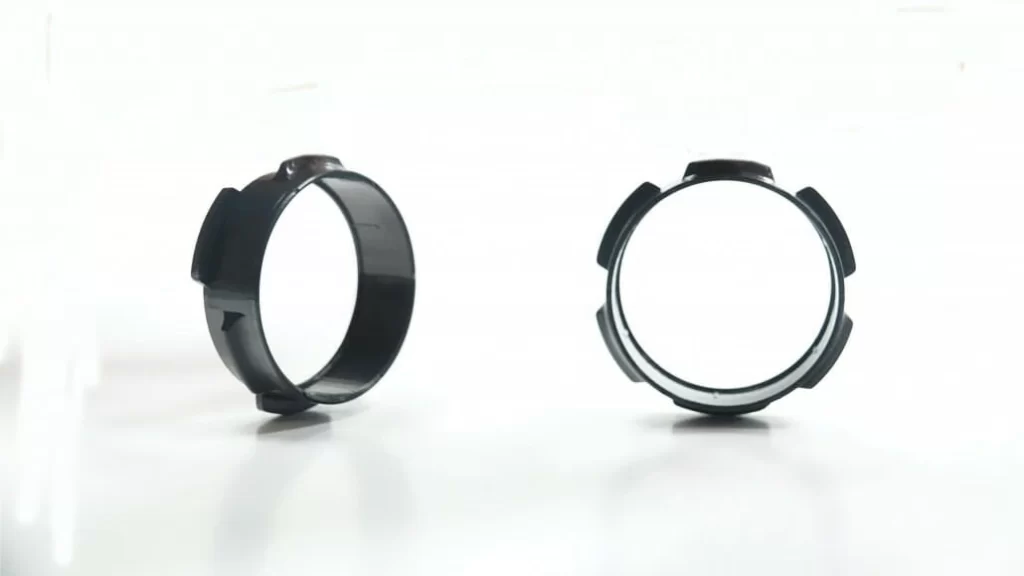

This adapter system consists of a smartphone case and an optic adapter ring that aligns the phone’s camera with the eyepiece of various optics, offering a range of adapters tailored for different iPhone models.
It’s versatile, allowing for quick alignment with spotting scopes or binoculars, making it a go-to choice for on-the-spot captures.
· My Top Pick: VEO PA-65 Digiscoping Adapter For Smartphone
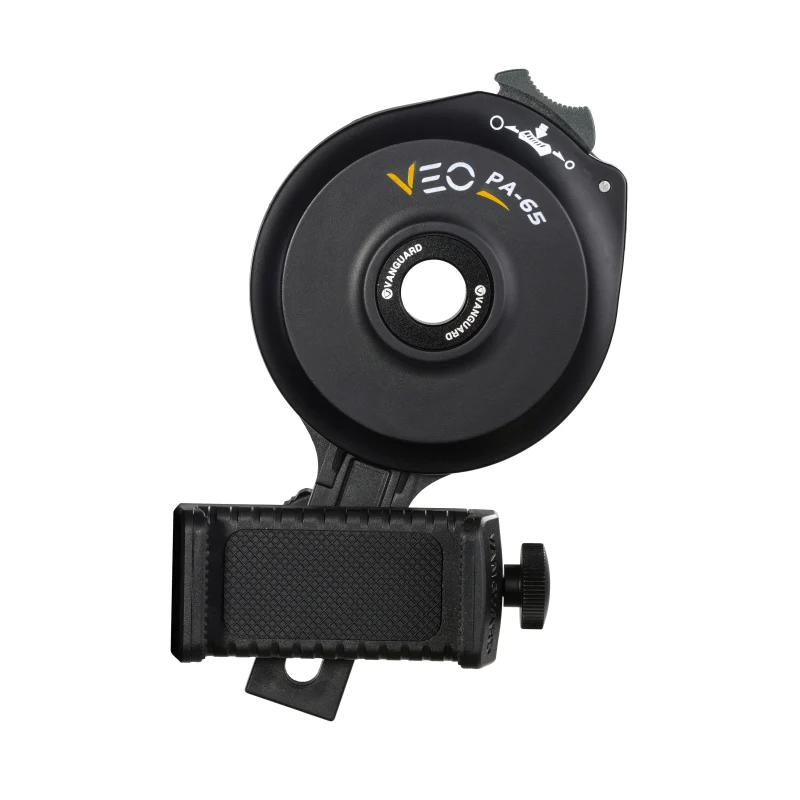
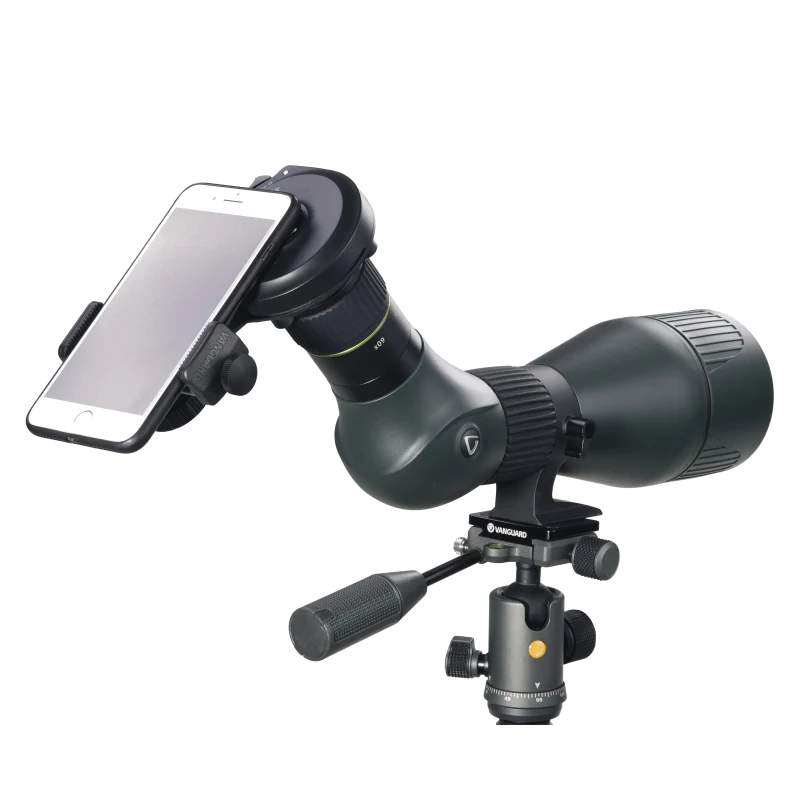
Source: vanguardworld.com
VEO PA-65 Digiscoping Adapter is designed specifically for smartphones, this adapter seamlessly fits with a variety of optics, ensuring that my iPhone’s camera aligns perfectly with the eyepiece.
What stands out about the VEO PA-65 is its build quality and the precision it offers. The adapter is robust, ensuring that the phone stays securely in place, eliminating any chances of it slipping off during crucial moments. Moreover, its design caters to different iPhone models, ensuring a snug fit. The ease of attaching and detaching the phone from the scope, combined with its durability, makes the VEO PA-65 a must-have for anyone serious about digiscoping into their iPhone.
For an in-depth guide on phone adapters for digiscoping, refer to my earlier article, best spotting scope phone adapter.
My Tip: Select an adapter based on its durability, fit with your iPhone model, and user-friendliness. Dive into reviews, view setup guides, and don’t hesitate to contact manufacturers for any compatibility queries.
Spotting scopes or Telescopes or Binoculars
When it comes to digiscoping, the choice between spotting scopes and telescopes is crucial. Both have their merits, and the best choice often depends on the specific needs of the photographer.
Spotting Scopes
Spotting scopes are essential for terrestrial viewing. I always opt for those with a large objective lens for brighter images, especially in low light. The variable zoom offers me framing flexibility, but I’m cautious with higher magnifications to avoid shaky images.
Plus, it’s beneficial to have a scope that’s waterproof and fog-resistant. The following spotting scope is my favorite.
- My Top Pick: Vortex Razor HD 27-60×85
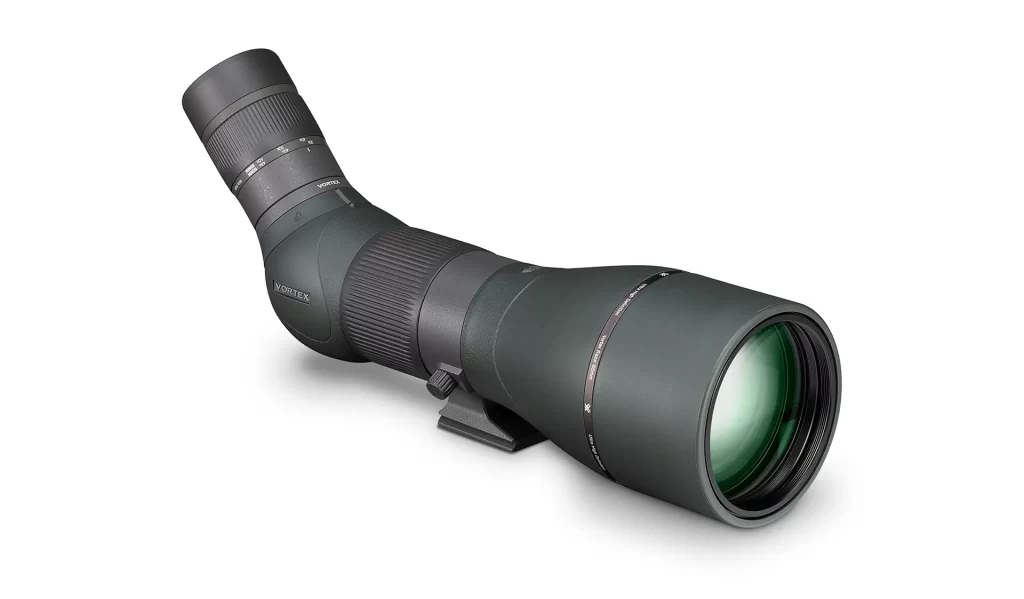
Source: vortexoptics.com
The Vortex Razor HD 27-60×85 stands out as a top-tier spotting scope. Its 85mm objective lens delivers brilliantly bright and detailed views, while the 27-60x zoom provides the versatility I often need.
I’m particularly impressed by its high-density glass and multi-coated optics, which consistently offer me clear and sharp images, making it an invaluable tool in my outdoor adventures.
Besides, for a comprehensive buyer’s guide, you can refer to my previous article on spotting scope for photography. Moreover, if you’re a beginner in using spotting scopes, my guide on how to use a spotting scope for photography is perfect for you.
Telescopes
Telescopes are traditionally used for astronomical observations but can also be employed for digiscoping, especially for capturing distant terrestrial subjects. They offer higher magnification than spotting scopes, perfect for observing far-off subjects, but require utmost stability.
I appreciate a wide field of view for scanning vast areas, while a narrower one gives detailed insights.
- My Top Pick: Celestron AstroMaster 114 EQ

Source: celestron.com
The Celestron AstroMaster 114 EQ Telescope is a standout in its class. With its 114mm aperture, it delivers clear views of celestial objects. Its robust design and fully-coated optics ensure bright, detailed images.
From observing the intricate craters of the moon to exploring distant galaxies, this telescope has consistently enhanced my stargazing sessions.
Binoculars for Digiscoping
When I think of digiscoping, binoculars aren’t my first choice, but they’re surprisingly effective. They’re portable, making them great for lightweight travel. Aligning the camera with one eyepiece can be tricky, but the depth it offers is unmatched.
While they don’t magnify like telescopes, they’re perfect for broader views like landscapes. Their wide field helps track moving subjects, and for outdoor use, I always ensure they’re weatherproof.
- My Top Pick: Celestron AstroMaster 114 EQ
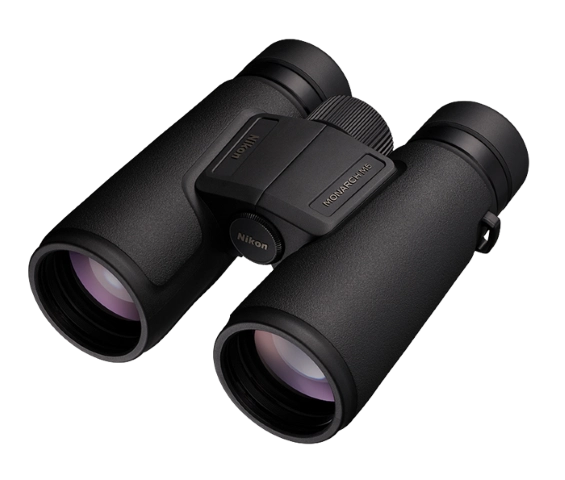
Source: nikonusa.com
The Nikon Monarch M5 8×42 binoculars combine performance and value. Featuring extra-low dispersion (ED) glass, they provide bright, clear views with vibrant colors. The high-reflective prism coating enhances light transmittance, while the ergonomic design ensures comfort.
Although they have a limited field of view, their quality and design make them a top choice for my digiscoping shoots.
My Tips: while telescopes offer incredible magnification capabilities, spotting scopes often provide the versatility and portability that many outdoor enthusiasts and photographers prefer. While binoculars might require a bit more practice to get the alignment right, the results can be rewarding.
Tripods and Mounts
Stability is key. I’ve learned the hard way that a shaky tripod results in blurry images. Opt for durable materials like carbon fiber or aluminum. Consider height, leg adjustments, and weight capacity to support your equipment.
The tripod head is crucial: ball heads offer speed, while pan-and-tilt heads provide precision. Quick-release plates simplify attachment, and portability is vital for those on the move.
- My Top Pick: Manfrotto MT190XPRO4
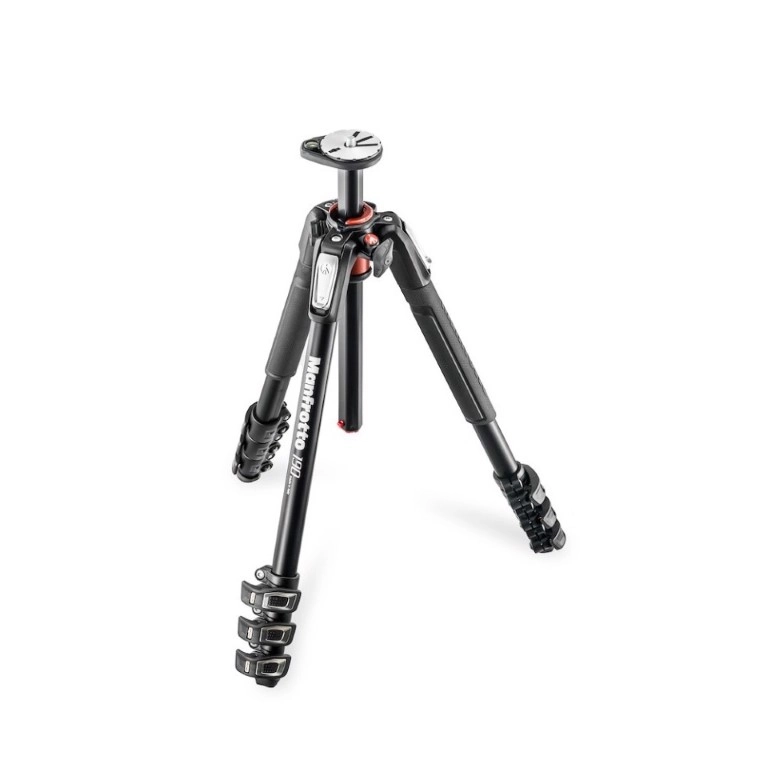
Source: manfrotto.com
The Manfrotto MT190XPRO4 is an invaluable tripod for digiscoping during adventure journeys. With its compact design extending up to 63.5 inches, it offers a broad shooting range. The 360-degree swivel is perfect for various camera orientations, especially when capturing dynamic wildlife moments.
Moreover, its robust build and stability make it ideal for securing scopes, ensuring sharp, blur-free images, even in challenging terrains or windy conditions.
How to Digiscope with an iPhone
The key is understanding the nuances of both your iPhone and the digiscoping equipment, ensuring they harmoniously work together to capture those perfect shots. Setting up might seem daunting, but with practice, it becomes second nature:
- Attach the adapter to your iPhone.
- Connect your iPhone to the scope.
- Adjust the settings for optimal results. I often switch to manual mode for more control, especially in tricky lighting conditions.
- Decide between manual focus for precision or auto-focus for convenience.
- Once set, start capturing! Both photos and videos come out brilliantly.
Moreover, the following video shows the interesting experience of digiscoping with a smartphone.
Tips and Tricks for iPhone Digiscoping
Over time, I’ve picked up several techniques that have elevated my digiscoping game:
- Gradually zoom to maintain image clarity.
- Ensure good lighting; I’ve found early mornings or late afternoons to be ideal.
- Composition is key. Think about framing, angles, and what you want your subject to convey.
- Even the slightest movement can blur your shot. Using a remote shutter or the iPhone’s timer can reduce shake.
- Regularly clean both your iPhone camera lens and the scope’s eyepiece to ensure sharp images.
- Digiscoping can drain your iPhone’s battery. Carry a portable charger to ensure you don’t miss any shots.
- Don’t be afraid to try different settings and angles. Sometimes the unexpected shots turn out to be the best.
Post-Processing and Editing on the iPhone
Capturing the shot is just the beginning. The magic often happens in post-processing. Apps like Snapseed, Lightroom Mobile, and VSCO have been invaluable.
Basic edits like cropping, adjusting brightness, and color correction can transform a shot. For a creative touch, I play around with filters and overlays.
Challenges and Limitations of Digiscoping with an iPhone
It’s not always smooth sailing. I’ve faced challenges like running out of storage or battery during crucial moments. While iPhones are powerful, they have their limitations, especially when compared to DSLRs.
So, being aware of these limitations helps in setting realistic expectations and preparing adequately for a digiscoping session.
• iPhones have smaller sensors than DSLRs, which can affect image quality, especially in low-light conditions.
• Unlike DSLRs, iPhones have a fixed aperture, limiting the depth of field adjustments.
• Extended use, especially in video mode or in hot conditions, can cause the iPhone to overheat.
• Unlike optical zoom in DSLRs, iPhones use digital zoom which can degrade image quality.
• While some iPhone models are water and dust-resistant, they aren’t as robust as some outdoor-specific cameras.
• Even with third-party apps, iPhones don’t offer the same range of manual controls as a DSLR.
• Depending on the adapter, there might be some instability or misalignment when attaching the iPhone to the scope.
However, with preparation and awareness, these challenges can be mitigated. Always ensure your device’s safety, especially when out in nature.
Conclusion
Digiscoping with an iPhone has revolutionized the way I capture the natural world, blending the power of optics with the convenience of modern technology. While the iPhone has its limitations, with the right equipment and techniques, it’s possible to achieve stunning results.
From spotting scopes to tripods, each piece of gear plays a pivotal role in the digiscoping process. The journey has its challenges, but the rewards, in the form of breathtaking images, are well worth the effort.
The world, as seen through a scope and an iPhone, is truly magnificent.
Justin Parker is a professional photographer and has been in the industry since 2007. He attended the University of Georgia. Justin combines his passion for photography and his interest in writing to give life to this blog which talks about photography in order to help and inspire young photographers.

